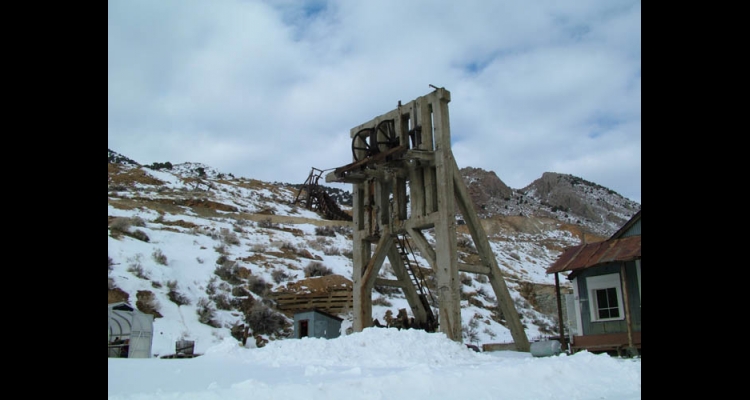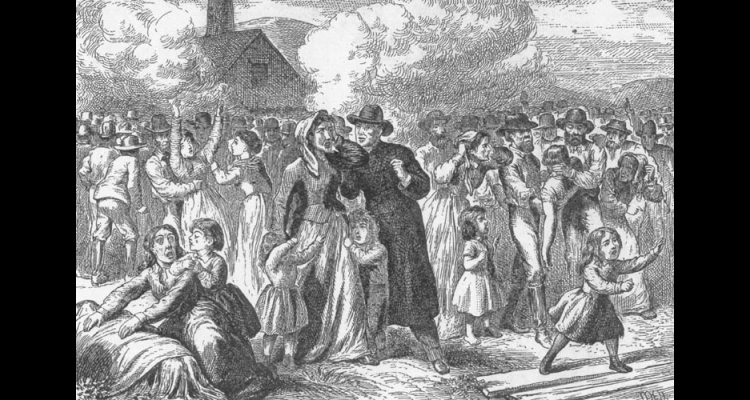Yellow Jacket Disaster
Gold Hill's Yellow Jacket Disaster was probably the worst mining accident in Nevada history. On the morning of April 7, 1869, fire spread at the 800-foot level. As the day crew descended, smoldering timbers collapsed, flooding poisonous air into the Yellow Jacket and neighboring Kentuck and Crown Point Mines. Fortunately, shifts were changing or casualties would have been higher. Nevertheless, survivors described horrible scenes of miners desperately struggling for life.
Heroic firefighters entered the mines, but flames and smoke pushed them back. At least thirty-five miners died, but some bodies were never retrieved, and single workers may have vanished without record. The fire persisted, so miners sealed off the offending levels, which remained hot for several years.
The disaster had two important political consequences. Adolph Sutro, who failed to secure funding for a tunnel connecting Comstock mines with the Carson River Valley, maintained that his project would have saved lives. Although that was hardly true, Sutro used the incident to gain support.
Three years later, John P. Jones, Superintendent of the Crown Point Mine, ran against William Sharon for the U.S. Senate. Sharon absurdly accused Jones of starting the Yellow Jacket Fire for stock manipulation. Ironically, the market crashed because of the accusation, and Jones won the race.
Article Locations
Related Articles
None at this time.

